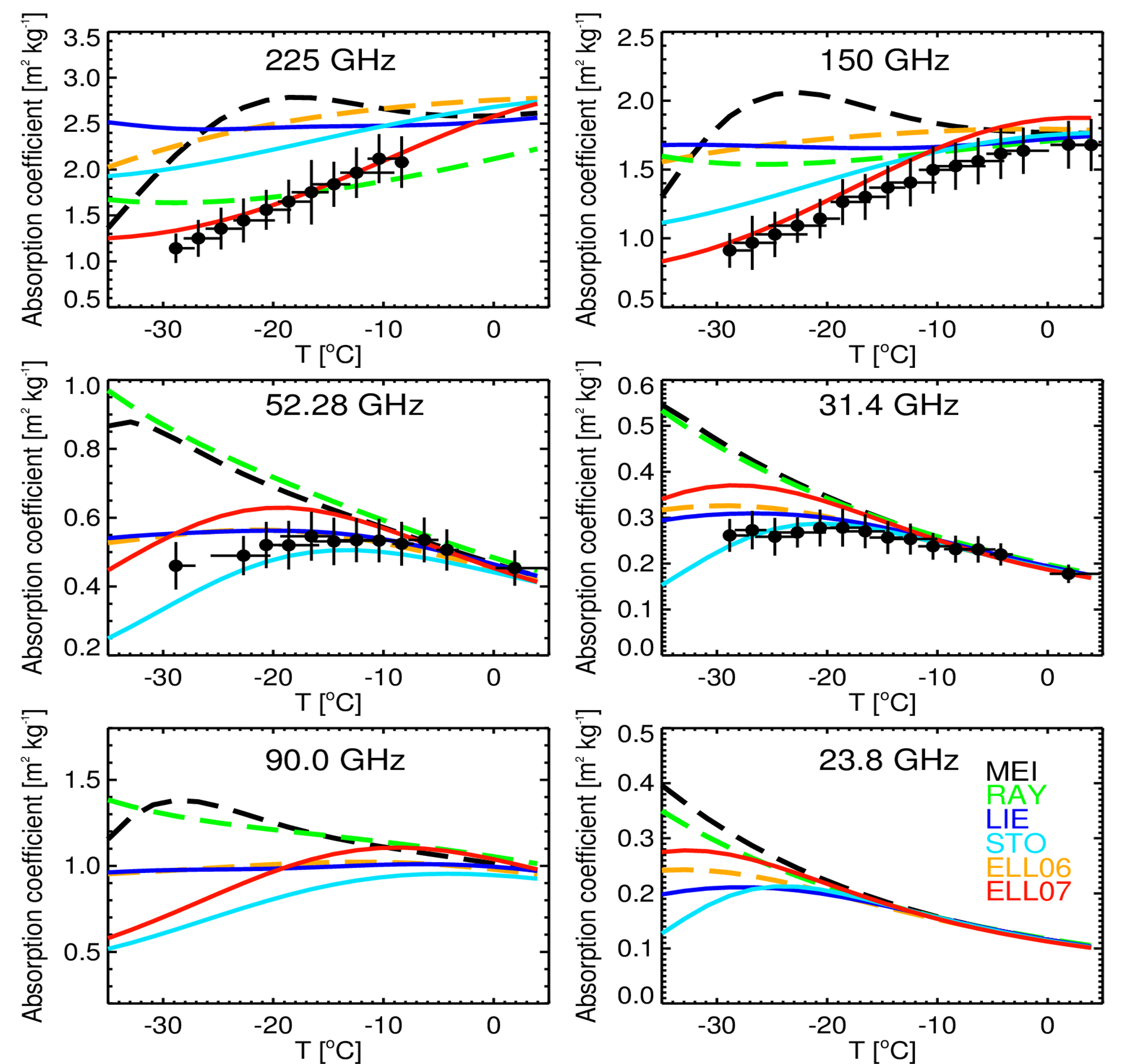Which Absorption Model Should Be Used for Supercooled Liquid Water in the Microwave?
Submitter:
Kneifel, Stefan — University of Cologne
Area of research:
Radiation Processes
Journal Reference:
Science
Accurate liquid water path (LWP) measurements are critical for a large number of atmospheric research topics. The most commonly used method to derive LWP is to retrieve it from sky brightness temperature data observed by microwave radiometers (MWRs). However, this measurement approach requires an accurate radiative transfer model that has the strength of the liquid water absorption well characterized. Biases in the strength of the absorption in the model will result in biases in the retrieved LWP. However, the accuracy of liquid water absorption models in the microwave for supercooled liquid (i.e., liquid water less than 0° C) is highly uncertain due to the paucity of accurate laboratory measurements at different microwave frequencies over a range of supercooled temperatures. Thus, commonly used absorption models can result in differences in LWP that range from -40% to +40% at -30° C if only frequencies below 35 GHz are used. If higher frequencies (such as 90 GHz that have enhanced sensitivity to low amounts of LWP) are used, then the differences can be as large as +70%. The deviating supercooled liquid water absorption models also introduce uncertainties for the estimation of radar attenuation. For example, at 94 GHz the spread between different absorption models for supercooled liquid water attenuation at -25° C reaches up to a factor of two.
Impact
In Kneifel et al. (2014), three microwave radiometer data sets that span the frequency range from 23 to 225 GHz have been compiled that include a large number of cases with cloud temperatures ranging from 0 to -30° C. These data sets include the ARM Mobile Facility deployment to the Black Forest in Germany, a data set from the Zugspitze (the highest peak in Germany), and from Summit Station in central Greenland. A recently published method (Mätzler et al. 2010) to derive ratios of liquid water opacity from different frequencies was employed in this analysis. The great advantage of this method is that opacity ratios are equal to the ratio of the mass absorption coefficients. Thus, they can be directly compared with the model predictions. Further, the opacity ratios are independent of LWP and very robust with respect to radiometer calibration errors.
Summary
The observed opacity ratios from all sites show highly consistent results that are generally within the range predicted by the six absorption models. However, none of the models are able to approximate the observations over the entire frequency and temperature range. Findings in earlier published studies were used to select one specific model as a reference model at 90 GHz. Together with the observed opacity ratios, the temperature dependence of the mass absorption coefficient at 31.4, 52.28, 150, and 225 GHz was derived. The results reveal that the model by Stogryn et al. (1995) fits the opacity ratio data better, generally at frequencies below 90 GHz. The model by Ellison (2007), however, is superior at higher frequencies. The models by Liebe et al. (1991 and 1993) that are commonly used for MWR LWP retrievals and other radiative transfer applications have been found to systematically overestimate the absorption coefficient in the supercooled region (resulting in underestimation of LWP). The findings are consistent with earlier studies and strongly indicate that using older models like Liebe might introduce systematic biases in the retrieved LWP of supercooled clouds.
The robust opacity ratio method can be easily applied to high-frequency MWR data sets at different locations and for longer time periods. These data sets can serve as an important testbed for future improved liquid water absorption models.



